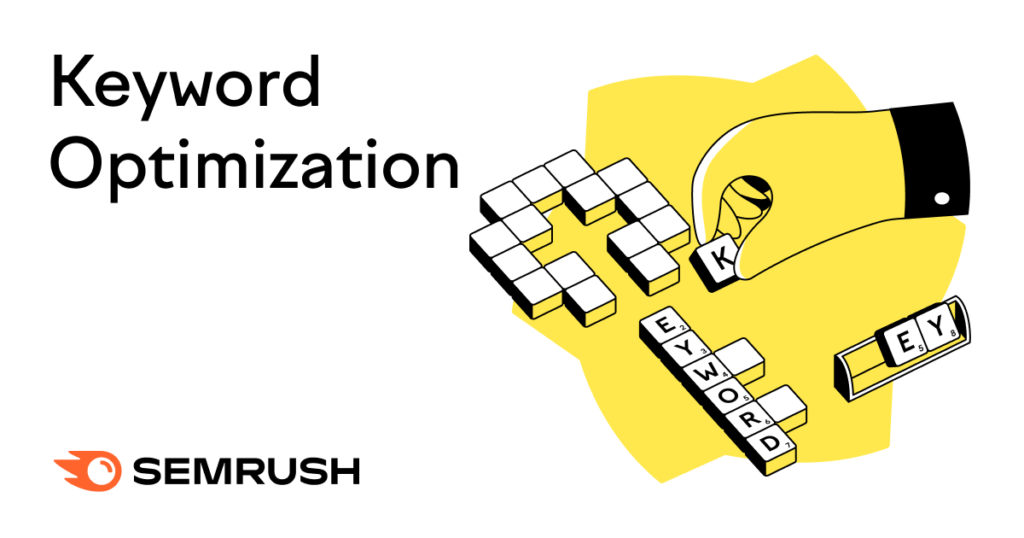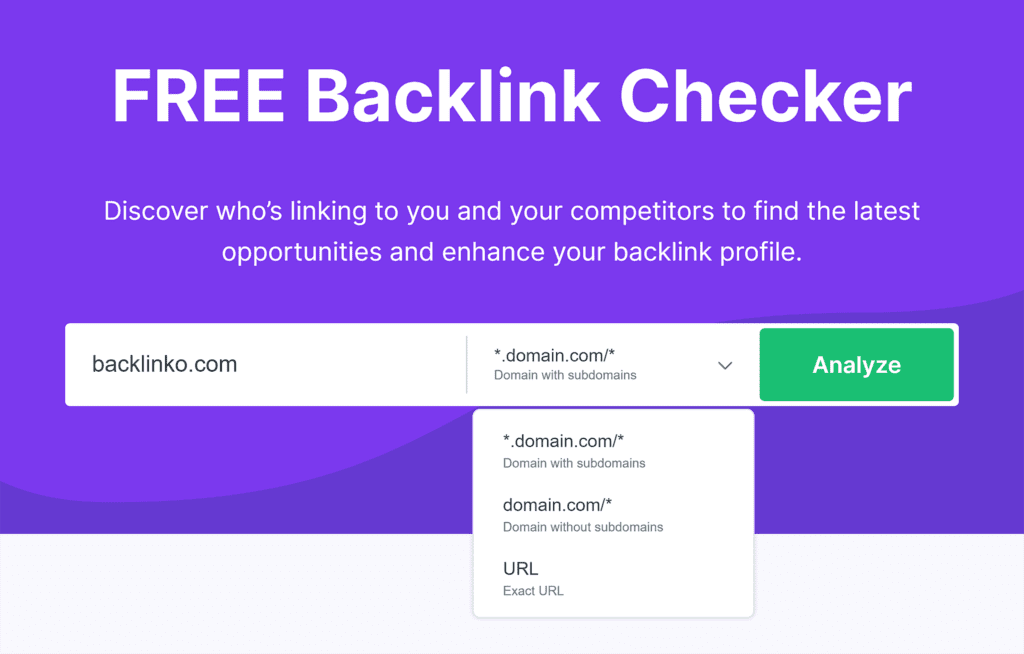Mastering Backlink Indexing: How to Effectively Index Your Backlinks
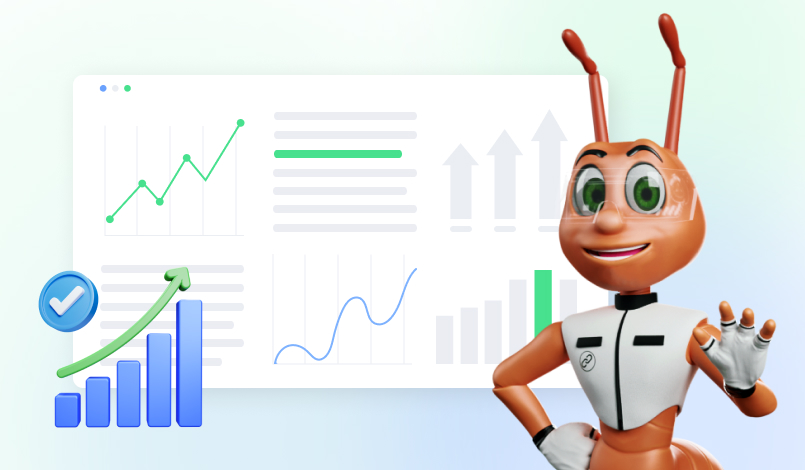
Dmytro і а SEO Team Lead at Backlinkers. He has more than 5 years of experience in managing SEO teams. He shares practical advice and gives link-building ideas to improve your results.

Reviewed by



Head of Link Building
Serhii has been working in search engine optimization and link building since 2015. His main professional interests are optimization and automation of routine processes for link builders, total quality control, and monitoring of backlinks.
Updated on: February 22, 2024
20 min read
- Introduction to Backlink Indexing
- Why Do We Need to Index Backlinks Quickly?
- Effective Strategies on How to Index Backlinks
- Advanced Tools and Techniques for Backlink Indexing
- Best Practices and Tips for Efficient Indexing
- Monitoring and Analyzing Backlink Indexing Results
- Final Thoughts
- Other Articles
Google takes anywhere from one hour to several weeks to index newly published web pages. This can be an issue if you’ve received a backlink from another domain and want Google to distribute page authority to your site as quickly as possible.
Google will eventually find most of the pages linking to you during its normal crawls. But we don’t want that! We value speed, as the sooner new links get found, the better the chances of outpacing competitors in search. So, is there any way to increase the speed at which Google and other search engines index backlinks ?
Yes, there are ways to help Google find new pages faster. That’s what we will discuss in this article. Let’s get started with a quick intro before looking at the techniques you can use.
Introduction to Backlink Indexing
Google’s index is its database of websites that it queries for information before presenting specific pages to users based on their search terms. Just like you can’t borrow a book that your library doesn’t have, Google won’t return a page in the search results if it hasn’t made it to its index.
Indexing occurs when Google’s bot visits a page, analyzes what it means, and stores its contents in its index. If the crawler encounters new backlinks in the crawled page, it will pass PageRank to the linked pages. So, it’s at this moment that Google is said to index backlinks .
Let’s consider an example. You published a guest post with a link back to your site.
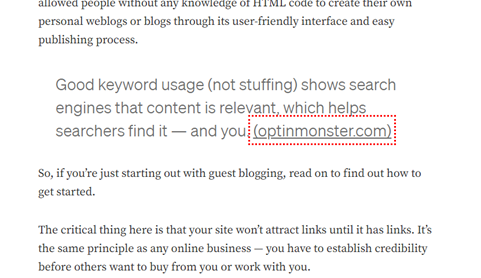

Example of a link in a guest post
Google’s bot will visit the page during its routine crawls. It will notice the link, index it, and pass PageRank (link juice) to the linked domain.
And what is PageRank? Conceptually, it refers to the algorithm developed by Google to gauge the quality of webpages and assign positions in search results. Links pass PageRank, which increases the trustworthiness and prominence of a page.
P.S. Publishing a new page and getting it indexed are two entirely different things. Google doesn’t track sites on a real-time basis, so it is not aware of which content has been published on each domain.
Why Do We Need to Index Backlinks Quickly?
As indexing requires computer resources, Google restricts how soon it crawls all websites. So, each website gets a turn, and the turn could be in several weeks.
Obviously, Google assigns a crawl budget based on how active and useful a site is. CNN, The New York Times, and other sites with millions of visits get crawled more often. Domains that publish new articles every other week naturally won’t get a larger crawl budget.
So, the fundamental idea behind backlinks indexing is getting search engines to hasten the process of indexing a new page, even when it’s not yet its turn. If you can get pages containing links to you indexed faster, you have some SEO wins in store.
Your PageRank increases much faster, allowing your pages to climb up in ranking quickly, too. You can outperform competing pages experiencing delayed gratification. This of course means more traffic and better business.
Let’s tackle one commonly asked question: “How long does it take for backlinks to show up?” It depends on where you’re looking. That’s because each search engine and SEO tool maintains its index. So, backlinks may enter each backlink index depending on how active the crawler is.
For instance, it’s rumored that Microsoft’s Bing is much faster than Google at crawling new pages. However, Google finds more quality content.
However, the fact that the backlink has made it to the index doesn’t mean you’ll see the SEO benefits immediately. You should keep tracking your keyword ranking to determine if your online visibility is improving.
Effective Strategies on How to Index Backlinks
Before looking at strategies on how to index backlinks faster, let’s discuss how to check Google index status of your backlinks:
Step 1: Get the URL of the page that has linked to you.
Step 2: Use the following Google search operator to search for the URL on Google: “site:https://example.com”
Step 3: Check if the URL and page are listed in the results as follows:
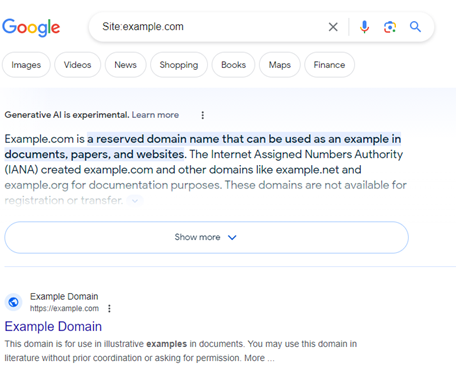

The page is getting indexed.


The page is not indexed.
So, let’s look at strategies to index backlinks more quickly on search engines.
The Power of Quality Backlinks
The strategy involves getting links from authoritative sites. The reason for this is rather simple: if Google and other search engines trust the source, they tend to crawl it more often to see if it has fresh and quality content that will enhance Google’s search experience.
So, which strategies can use to build more quality backlinks that make it to the backlinks index much faster? It’s always a good idea to follow these best practices:
- Create link-worthy and viral content that generates lots of shares and backlinks (statistics, studies, or original reporting);
- Increase your content quality to get natural high-quality backlinks from leading domains;
- Find guest posting opportunities that provide dofollow links that pass link juice to your site;
- Try out link building techniques like outreach blogging and broken link building to secure other relevant backlinks.
So the technique doesn’t involve trying to capture the attention of the crawler. It just pegs on the success of authoritative domains to get backlinks indexed faster.
Manual Submission Techniques
Manual submission entails requesting search engines to crawl the pages containing the backlinks. The process is carried out in Google Search Console by requesting a crawl.
The only restriction is that users can only request crawls for their domains. Therefore, you can’t enter newly acquired backlinks and expect Google to Crawl them. The process can only be executed by the webmaster who has ownership access to the page. Here is what entails:
Step 1: Visit Google Search Console
Step 2: Enter the page URL in the URL inspection tool.
Step 3: Google Search Console will highlight if the URL is on Google.
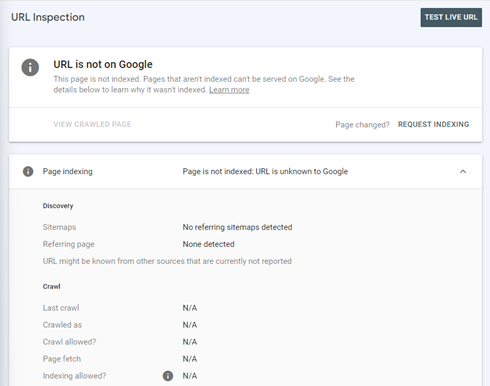

Screenshot of Google’s URL inspection tool
Step 4: If the URL is not on Google, the webmaster should click on Request Indexing to index backlinks on it.
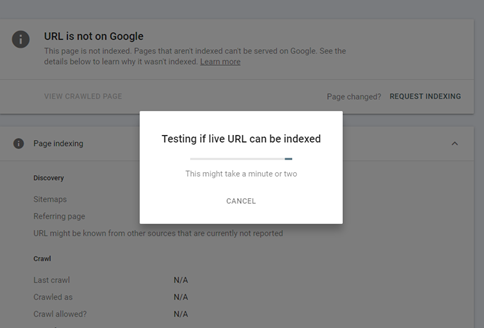

Requesting to index a page
Note: While you can only request a URL inspection for your domains, it also means that you can link to the external page within your own pages and request a crawl. This should be avoided as it can appear as a link exchange scheme and an attempt to manipulate Google’s search algorithm. So, don’t link back to the linking site just for the sake of indexing backlinks.
Social Media for Indexing
X (formerly known as Twitter) is the holy grail for getting new content indexed. It’s the only social media platform where posts show up among the SERP features as carousels.
How do you use it for indexing? Let’s say you have published an article on Forbes.com with a link back to your website. You go on X and post about the page.
Eventually, Google will index the tweet by following the URL and analyzing the content before adding it to its index. Thereby, it will discover and index backlinks to your site.
But the question is, “How long does Google take to index posts on X?” Well, the time taken will still vary based on how popular the tweet is or the popularity of the X account.
Faster indexing can only happen if the tweet gets lots of shares and likes. So, it’s not quite foolproof and may not deliver consistent results.
Advanced Tools and Techniques for Backlink Indexing
More methods can be used to notify search engines of the presence of new URLs to promote indexing. The methods are considered advanced as they rely on more complicated steps than carrying out manual submissions on Google Search Console.
These include Google-service-related approaches like adding hyperlinks to YouTube video descriptions, sending links via Gmail to prompt the system to check their safety, adding pages to bookmarks in Google Chrome, and including the link in posts on Google Business Profile.
However, you can also get your links indexed properly with other approaches. Let’s look at two popular ways to get on the search index sooner.
Using Third-Party Indexing Services
A backlink indexer is a third-party tool built to reduce the time it takes for search engines to discover new content and index the backlinks. These services may use a combination of techniques, including pinging, posting on social media, using Google Cloud services, and others. Many of them choose to keep their proprietary processes a secret.
IndexMeNow
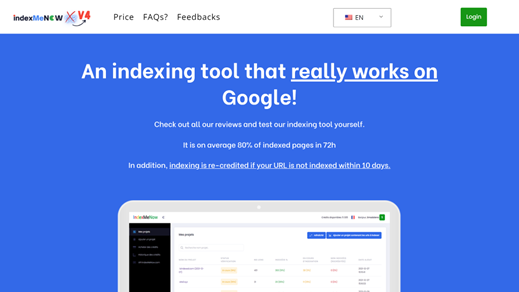

According to the service, they index 80% of new pages on Google in the first 72 hours. They similarly recredit customers if they have not had the URL index in 10 days. They claim to use three different methods, including Google services, as the company claims that Google needs to see the URL from different sources before choosing to index it.
One-Hour Indexing


This links indexer relies on a fully automated system to get more backlinks noticed faster by Google. In their tests, they managed to have an average of 50% of backlinks indexed in 1 day. The service doesn’t exactly disclose how they do it but allows users to get one or two links indexed faster for free.
Pinging Backlinks
Pinging entails sending a notification to search engine bots about new backlink URLs pointing to your site. It’s not an entirely novel concept, as even WordPress can ping search engines.
Now, Google allows website owners and other internet users to send out notifications for new URLs here. You only append your desired page at the end of the string and enter it into a browser.
Pinging can get repetitive; that’s why it’s wise to use pinging tools that also send out requests to search engines. Some free tools you can use include:
- Backlink Ping SEO;
- PrePostSEO Google Indexer;
- Mass Ping.
Visit the backlinks ping tools and enter your URLs to start pinging different search engines.
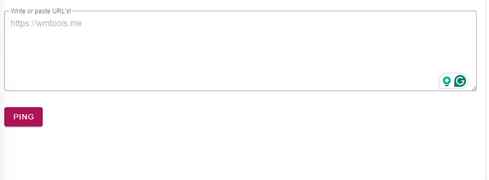

Screenshot of an online ping website tool
Best Practices and Tips for Efficient Indexing
While there are ways to hasten the indexing process, it’s not always successful. However, eventually, search engines will find and index the linking page. That means that you should not overly exert your SEO efforts solely on trying to get the linking page indexed. Such attempts can come off as spammy and may end up impacting your SEO efforts.
Now, here are some common pitfalls to avoid in your link building efforts:
- Don’t come off as aggressive or stubborn when trying to encourage webmasters to submit URL inspections to index backlinks;
- Avoid reciprocal linking to external pages solely to index external pages faster;
- Don’t forget to ensure that the backlink is dofollow and not marked as sponsored;
- Do avoid generating more backlinks on spammy domains with poor site authority. This can get you penalized;
- Don’t prioritize quantity over quality backlinks as part of your link building efforts.
Strategies to Avoid Spamming and Over-Pinging
Google’s algorithm has become super-advanced and can flag attempts to manipulate its normal process of assigning page rank. You may get in trouble for manipulating linking practices to promote faster Google indexing.
Now, as you go forward, don’t excessively ping backlinks. Search engine bots can view a large number of ping requests as an attempt to build links unethically.
Be careful with using index services as well. They will apply a combination of techniques that, if done repeatedly, may come off as spammy. It’s important to only pick a limited number of external pages to promote every month.
Additionally, the indexing process should remain natural. The process of acquiring new backlinks should be gradual, without sudden spikes in link indexing attempts.
Combining Pinging with Other SEO Techniques
Notifying search engines about the existence and relevance of your web pages with pinging tools is not enough. You need to integrate pinging with other search engine optimization approaches that include:
- Keyword research;
- Content creation;
- Link building through outreach, niche edits, and guest postings;
You need to build a good SEO strategy that will help you target the right audience, provide valuable information, and build trust and authority in your niche.
Monitoring and Analyzing Backlink Indexing Results
Why is it important to monitor the success of backlink indexing efforts? Because you want to make sure that Google crawls your new links and adds them to its database. This way, you can maximize their SEO value and drive more traffic to your web pages.
Here is how you can monitor the indexing status of your backlinks:
- Manual checking: You can enter the URL of the linking page in Google Search and see if it shows up. However, this method is time-consuming and not very accurate.
- Backlink monitoring tools: You can use specialized tools that automatically check the indexing status of your backlinks. They help save time and effort, giving you real-time insights that can allow you to make informed decisions.
Top Tools for Tracking Indexing Status
Here are some key tools that can help you with this task.
LinkCheckerPro
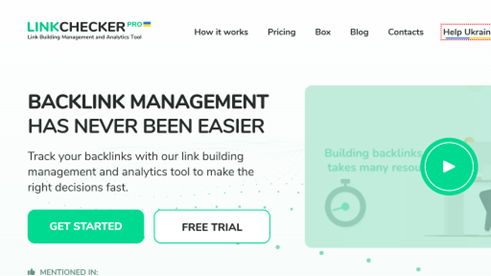

This backlink monitoring tool is designed specifically for tracking backlinks and managing your backlink profile. You can monitor the presence of backlinks on Google’s index, as well as receive real-time alerts for backlink parameter changes.
Google Search Console


This free tool from Google provides various reports and insights on your site’s performance and health. You can check the indexing status of a new backlink from the links reports and with the URL inspection tool.
Final Thoughts
Some proven tactics for effective backlink indexing include manual submissions, social media posting, link indexers, and pinging. These methods can help you boost your site’s visibility and ranking by ensuring that your backlinks are crawled and indexed by Google.
However, backlink indexing is not a static process. Google is constantly improving its algorithms and crawling capabilities, so you need to keep up with the latest changes and trends. Backlink indexing is important, but it is not the only factor that determines your SEO success.
Therefore, our final recommendation is to focus on your overall SEO strategy and send the best signals to Google. This means creating high-quality content, building relevant and natural links, optimizing your site’s speed and performance, and avoiding over-optimization with excessive pinging.
